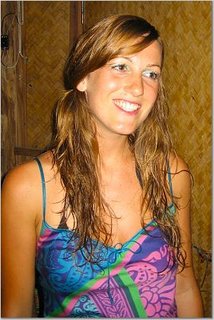
The ladies calling at the bus station, it doesn´t make you want to visit, but we did. Travelling Peru is a tour of Plaza de Armas´.
Arequipa is a world cultural heritage, known as the white city due to the volcanic rock it was built from.
The grand cathedral stretching one side of the main square, elegance wisps around the Plaza de Armas before weaving through the streets sweeping by the colonial architecture, not as polished as Trujillo or Cuzco, but timeless, lived in and cosy. We explored calles and found our way to the local indoor market selling fresh juices next to the mandatory goats heads adding character to this established culture.
In typical Peruvian style the city's plateaux curls up. At its edges poverty meets mountains, their names Chachani, Pichu Pichu and in this case El Misti a snow-capped volcano. Not the safest place to set up home, at the base of a volcano! But the government can´t charge for the land here. It´s the only option for those who can´t afford the $10 per square meter, in a safer part of town.
Colca Cañon
We´ve not had much luck with guides. For one reason or another, most have been terrible. However, on our 2 day tour from Arequipa to Colca Cañon, our guide had so much energy and a beaming smile, that brought our group together as well as possible when there´s three up-tight, defensive, dull girls somewhere from the north of South America! I didn´t like to take tours much but it is generally a great way to meet people.

Colca Cañon is the second highest in the world, after a neighbouring cañon,(forget the grand canyon!)
We trekked inland, late in the afternoon as shadows grew long. The Inca terraces and platforms cover the land, evidence of their knowledge and dedication in agricultural work.
When we reached the top we were confronted with human remains, 800 years old. The skulls display techniques they used to show devotion to their ´father´. They believed they were born from El Misti volcano. Their father! To reinforce this identity they would put their heads in vices to encourage the skull to grow into a shape similar to that of El Misti. This started as babies and continued.
Hot water springs were an option after the walk. I declined as I forgot my bikini and didn´t fancy hiring one! The night air came over and I found it hard to believe that the wet ones were warm. I stayed dry, smelling the egg sulphur.
We woke early next morning to see the largest flying bird gliding across Colca Cañon. We perched along the edge of the cliff watching the condor spread its 3 meter wingspan for and hour and a half. Did I get bored birdwatching? Not in the slightest.
JuanitaOne of the must see´s in Arequipa. The equivalent to 2 quid gets you into the museum. First there´s a documentary on her discovery. Where, when, how, why and the circumstances surrounding her death. Aged only between 12-14 this young girl is over 500 years old!
She is not alone. This was common practice of the Incas as well the civilisations that went before them. Juanita was the first to be found and is believed to be the first sacrificed of the lot. Juanita, who´s name seems to be chosen with modern affection, is thought to be more significant than the others due to the ornaments found at the site, the clothes she wore and maybe the size of the pin she wears in her poncho.
The ultimate offering to their Gods. They thought they could negotiate and influence the behaviour of their environment, the mountains, volcanoes and weather. When the Gods didn´t respond the sacfrifices became more.
The child would have to be young, beautiful and innocent. They attended a special school to prepare them, learning of their offering from a young age, although they didn´t know when or how they were going to join their Gods and almost become a God themselves. Fed a special diet and wore the best clothes, they knew they were different all of their short life.
The artifacts found with the sacrificed are in amazing condition, preserved by the ice for 500 years, the colours are bright and many items still intact. The clothes worn on the night of their death, still in incedable condition, with hardly a sign of wear on them. The pottery, dolls, bags containing food from that day, clothes display the Incas skill and attention to detail.
Juanita is the best preserved of all. She sits in a fetal position-symbolising rebirth into her new life. Incased in a glass box, 3 sheets thick, to protect her from the heat of modern day in Arequipa, which would lead her to decompose. Her hair is shiny, showing off her healthy diet, her clothes made from alpaca. She sits eerily still and she´ll sit us out.








